Key takeaways
- A rock band fanpage serves as a community space for fans to connect, share memories, and celebrate their favorite band.
- Choosing a tribute band that captures the authenticity of the original enhances the fanpage’s emotional impact and visitor experience.
- A well-structured website with engaging content and interactive features fosters a loyal fan community.
- Regular updates and accessibility improvements are essential for keeping the site relevant and inclusive for all fans.
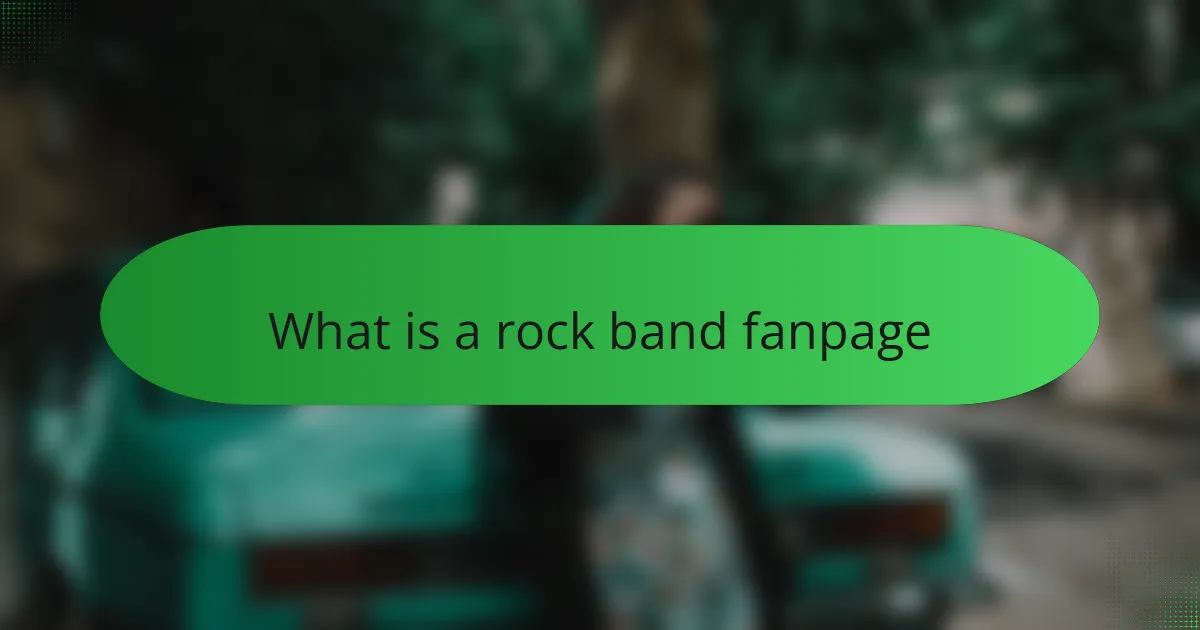
What is a Rock Band Fanpage
A rock band fanpage, in my experience, is more than just a website. It’s a dedicated space where fans come together to celebrate the music, the stories, and the shared passion for a band that has struck a chord in their lives. Have you ever found yourself wanting to connect with others who feel the same excitement about a guitar riff or a lyric? That’s exactly what a fanpage offers.
When I first created my tribute site, I realized how these fanpages serve as digital meeting points—places rich with photos, setlists, and trivia that keep the band’s legacy alive. It’s like building a small community around music that has deeply moved us. Don’t you think that having a space to relive those concert memories or share theories about a song’s meaning makes being a fan even more special?
For me, a fanpage also reflects the personal bond between fans and their favorite band. Every post, every image, and every comment echoes months or even years of admiration and loyalty. Isn’t it fascinating how a simple webpage can carry so much emotional weight?
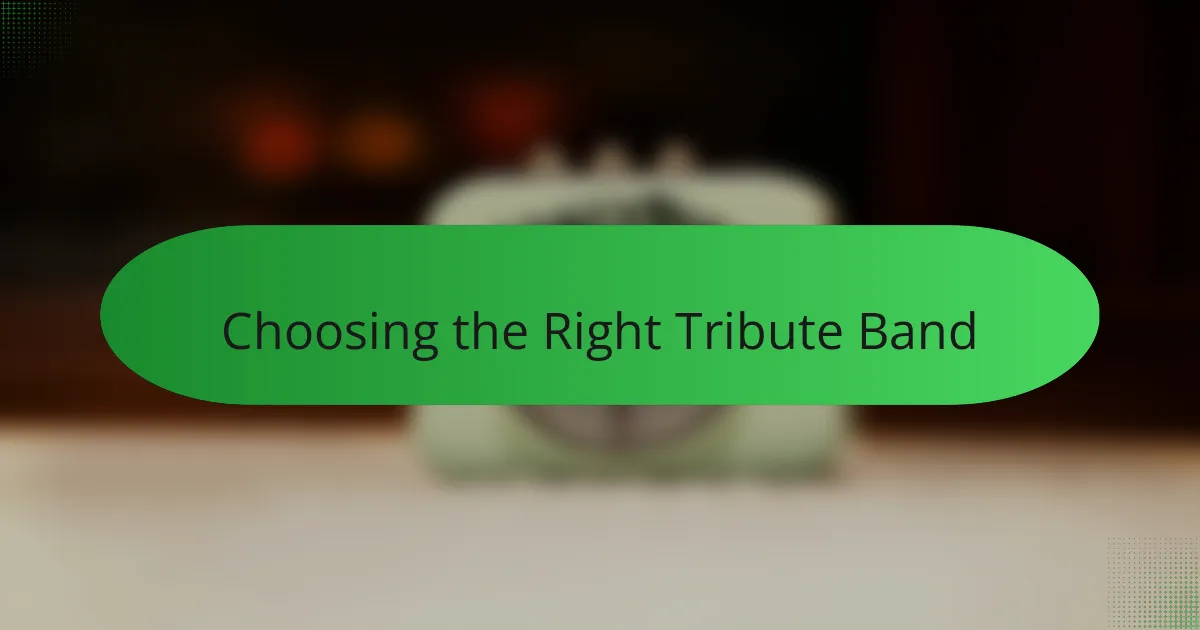
Choosing the Right Tribute Band
Finding the right tribute band felt like searching for a musical soulmate. I asked myself, does this band capture not only the sound but the spirit of the original? When a tribute band nails that distinctive energy and passion, it’s as if the original band’s magic momentarily resurfaces.
What really helped me was diving into live performances and fan reviews. I remember watching videos late into the night, trying to sense if the band’s connection with the crowd matched what I remembered from the originals. It’s surprising how much authenticity plays into your enjoyment—and ultimately, the vibe your fanpage will convey.
Have you ever noticed how a tribute band’s stage presence can evoke powerful memories? That emotional resonance is crucial. Choosing a band that feels genuine makes the whole tribute site richer, because your visitors aren’t just seeing a copy; they’re feeling the music’s heartbeat all over again.
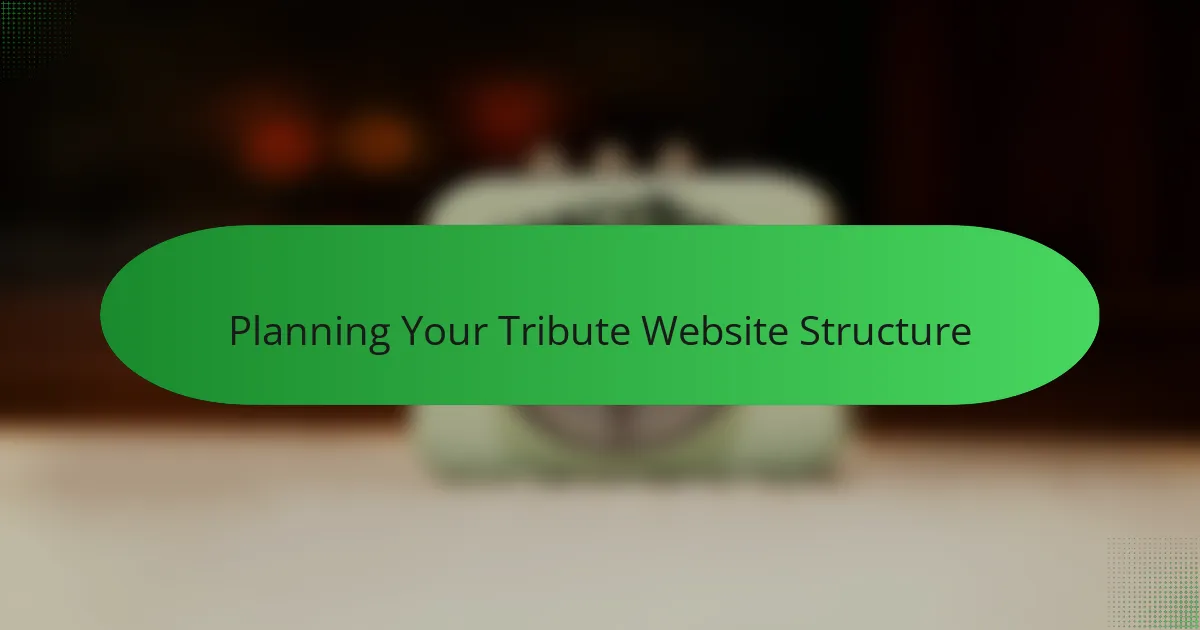
Planning Your Tribute Website Structure
When I started planning the structure of my tribute website, I quickly realized that organizing content wasn’t just a technical task—it was about creating a journey for fellow fans. Which sections would best capture the essence of the band and the tribute’s unique vibe? I found that dividing the site into clear segments like band history, gig reviews, and fan stories made it easier for visitors to navigate and feel connected.
One thing that surprised me was how important the homepage layout became. I wanted it to feel welcoming but also bursting with energy, much like the band’s concerts. Balancing photos, news updates, and videos took some trial and error—I often asked myself, “What would I want to see first if I landed here as a fan?” Those moments shaped the way I prioritized content and visuals.
Have you ever thought about how a well-structured site can transform casual visitors into dedicated fans? From my experience, mapping out a logical flow not only keeps people engaged but invites them to explore deeper. It’s like setting the stage for a memorable live show—everyone should know where to look and when to expect their favorite highlights.
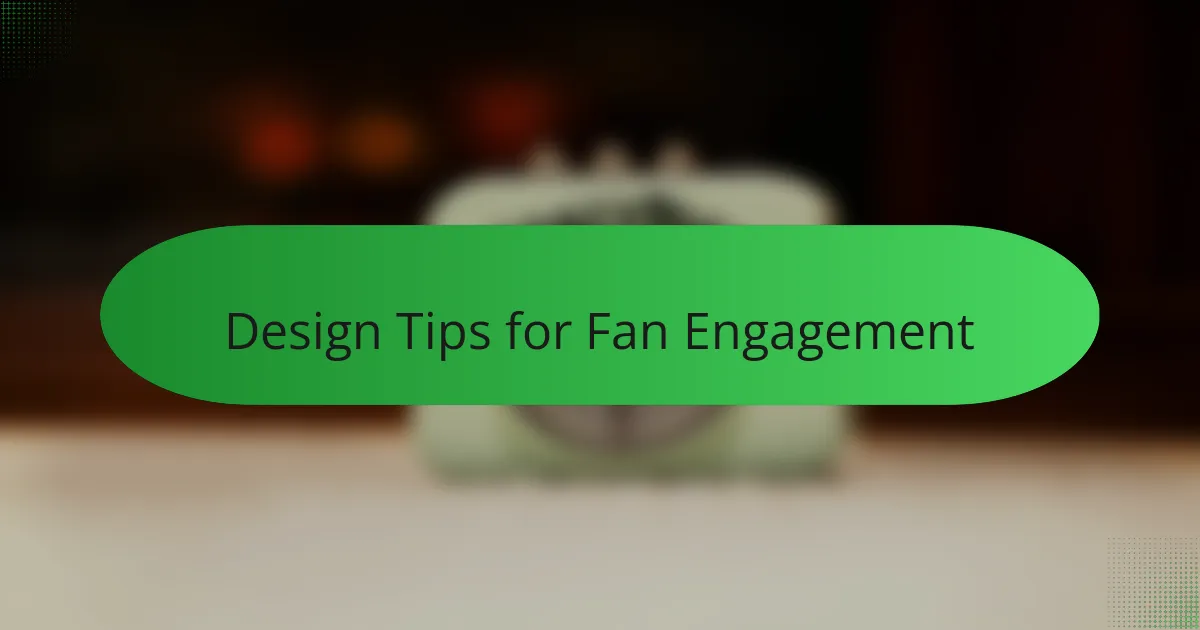
Design Tips for Fan Engagement
Designing for fan engagement, in my view, means putting yourself in the shoes of every visitor who lands on the site. I found that using bold visuals and easy-to-click buttons makes a huge difference—fans want to dive right into the content without any friction. Ever landed on a site that felt cluttered or confusing? That’s exactly what I aimed to avoid.
I also discovered the power of interactive elements like polls or comment sections. When I added a simple “Favorite Song” poll, it was incredible to watch the chatter grow. Have you noticed how giving fans a voice turns a static page into a buzzing community? It’s those little touches that transform visitors into loyal participants.
Lastly, I learned to keep mobile usability front and center. Fans aren’t just browsing on desktops—they’re checking updates on the go, at concerts, or even while jamming to a track. Making sure the site looked sharp and loaded fast on phones kept engagement high. Isn’t it frustrating when a cool site becomes a pain to use just because you’re on your phone? I made sure that never happened to mine.
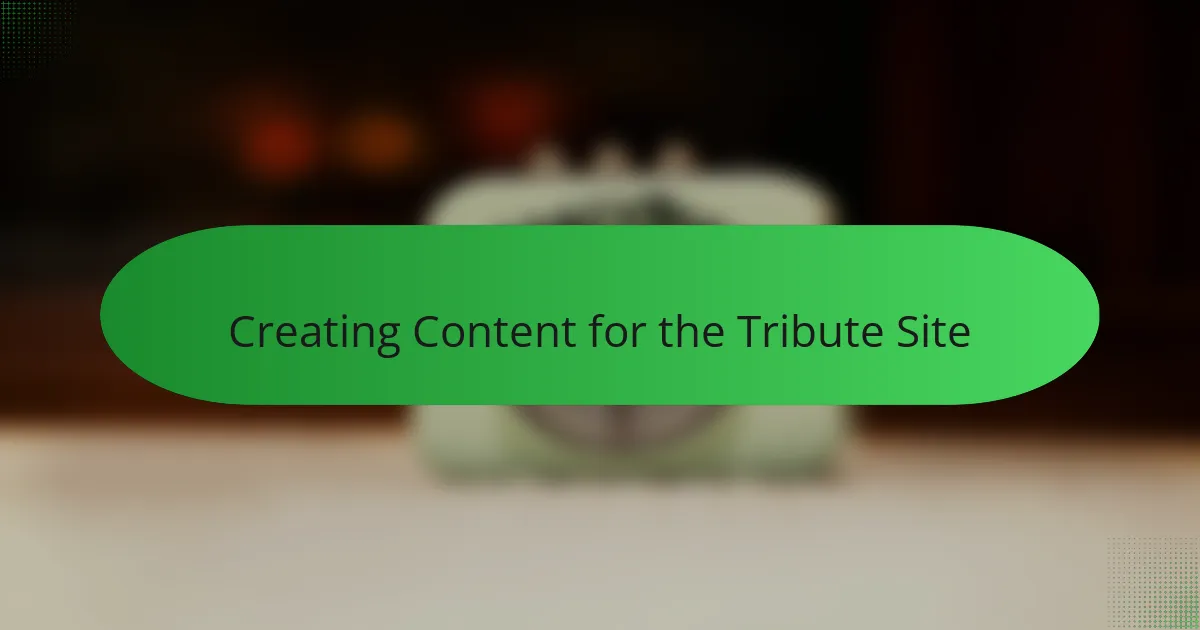
Creating Content for the Tribute Site
Creating content for the tribute site was hands down one of the most rewarding parts of the process. I found myself combing through old interviews, rare photos, and concert reviews, almost like piecing together a musical scrapbook that told the band’s story from multiple angles. Have you ever dug into memories so rich that it feels like you’re living the music all over again? That’s the kind of vibe I wanted to capture.
One challenge I ran into was striking the right balance between information and emotion. Fans crave facts—setlists, album details, tour dates—but they also want to feel connected, to relive the excitement and passion that the band ignited. I started including personal anecdotes from other fans and even a few stories of my own concert experiences. It made the site more than just a data dump; it became a shared space of nostalgia and enthusiasm.
I also learned that mixing up content formats really keeps things fresh. Embedding videos, sharing song lyrics, posting photo galleries—it all helped create a dynamic flow that invited visitors to linger and explore. When I saw fans commenting on a live clip or debating a lyric’s meaning, I realized I’d built a little community where the band’s legacy lived on vibrantly. Isn’t that the ultimate goal of any tribute site?

Challenges in Building the Website
One of the biggest challenges I faced was managing the technical side of building the website. Even with some experience, figuring out how to make everything work smoothly—from responsive design to quick loading times—was a steep learning curve. Have you ever struggled to get a page looking just right on both your phone and computer? That balancing act took much longer than I expected.
Another hurdle was curating content without overwhelming visitors. I wanted to include tons of details and multimedia, but too much clutter can easily drive fans away. It made me rethink how to organize everything so that the site felt inviting rather than chaotic. Finding this sweet spot between rich content and simplicity was a real test of patience and strategy.
Then there was the emotional aspect—making sure the site genuinely reflected my passion and respect for the band. I often found myself questioning, “Does this capture the spirit I want to share?” It was important to me that the site wasn’t just informative but also heartfelt, because after all, this tribute was meant to celebrate something deeply meaningful to me and other fans.
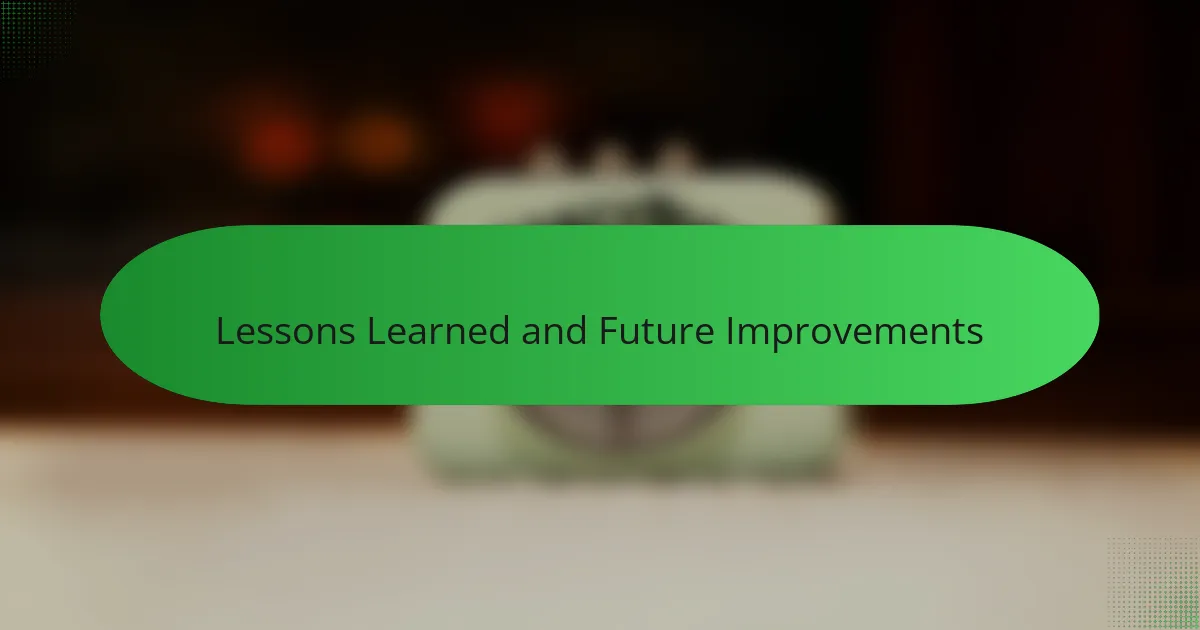
Lessons Learned and Future Improvements
Looking back, one big lesson I learned was the importance of regular updates. Early on, I underestimated how much keeping content fresh would keep fans coming back. Have you ever clicked on a site only to find the same old posts? It quickly loses its spark. Now, I plan to set a consistent schedule so the site feels alive and buzzing like the concerts we all love.
Another insight came from user feedback—I realized I had overlooked accessibility features that make a big difference for diverse fans. Simple tweaks like better contrast and keyboard navigation might seem small, but they invite more people into the community. Isn’t it worth ensuring everyone can enjoy the tribute without barriers? I’m definitely prioritizing these improvements next.
Finally, I discovered that deeper integration with social media could boost engagement significantly. I hesitated at first, worried it might clutter the site, but fans want easy ways to share memories and connect instantly. Going forward, I want to embed live feeds and create smoother sharing options. After all, isn’t a fanpage’s power measured by how it unites communities beyond just a webpage?